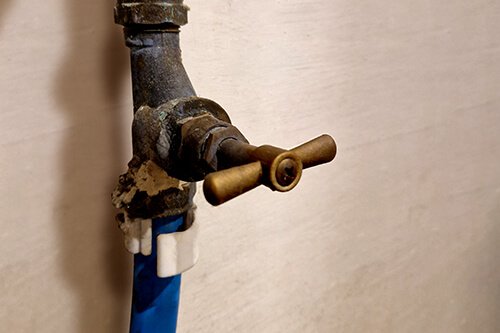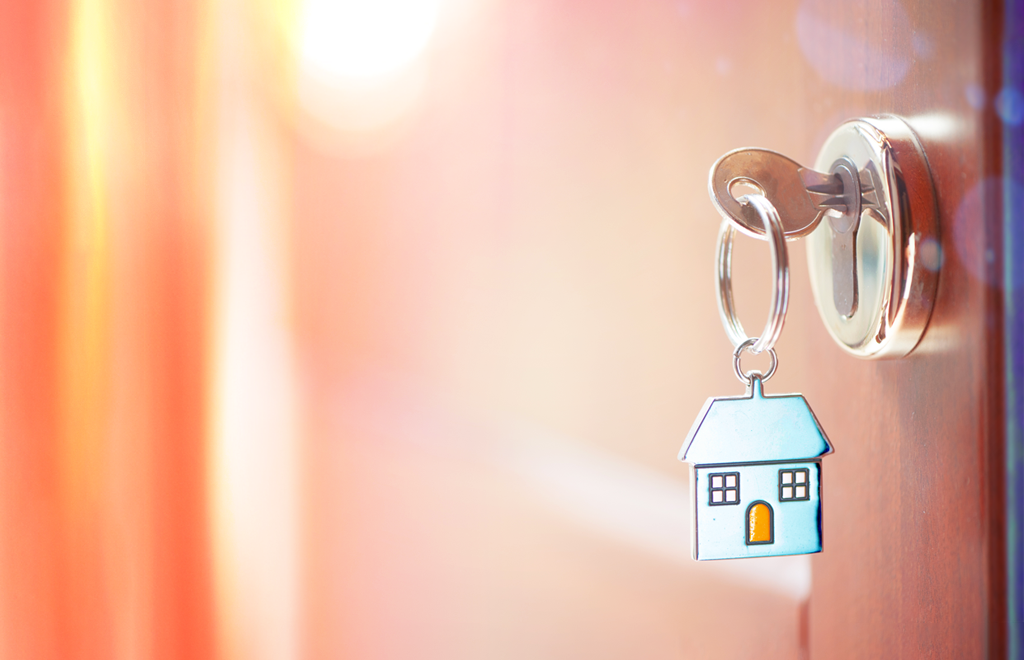Finding and using your stop tap

Knowing where your stop tap is and being able to turn it off when needed can be really important – after all, you never know when you could be affected by a leak or a burst pipe. Turning your water off before you go on holiday can also limit the amount of water damage should something happen while you’re away. With 40% of people unsure how to turn off the water supply in their home*, our guide is here to help you understand where your stop tap could be, and what to do if you need it.
What is a stop tap?
A stop tap, also known as a stopcock or stop valve, is designed to control the flow of water into your property. Situated inside your home, they usually look like this:

Popular locations for a stop tap
Your stop tap is normally placed just near where the mains water pipe enters your property. The most likely places to find it are:
- Under the sink
- Under the stairs
- In your airing cupboard, if you have one
- Under the floorboards near the front door
- Near the front door
- In the garage, utility room, bathroom or cellar
The importance of knowing where to find your stop tap
There are a number of reasons you may need to stop the water supply into your home, but most people find themselves doing this for the first time in an emergency situation – so it’s important to know where your stop tap is ahead of time, so you can act quickly if needed, and stop the leak from flowing.
Turning your water off before you go away on holiday or leave the property for a long period of time is also a very good idea. Should a pipe burst or a leak occur while you’re away, having the water turned off at the stop tap means you’ll significantly limit the amount of water that can escape, therefore reducing the amount of possible damage. This is especially important during winter when frozen pipes are more of a risk.
How to turn your stop tap off and on
Once you’ve found your stop tap, turn it in a clockwise direction to turn it off. It will take a few turns to turn the water fully off, and the tap may be a little stiff, so turn it carefully to avoid causing any damage to the tap or pipe. Once turned off any water left in the pipes will still be there, so if you need to let this drain and it’s safe to do so, you can do this by turning on your other taps in sinks and baths.
Only turn the water back on when it’s safe to do so. To do this, turn the stop tap slowly a few turns in an anti-clockwise direction. There may be a slight delay in water flowing through to your other taps once you’ve turned it back on as it needs to make its way through the pipes again. If someone has carried out repairs for you, they will advise when it’s safe to turn the water back on, or may do it for you as part of the repair.
We hope this guide has helped you feel better prepared if you need to turn the water off. If you’d like to know more about how to prevent frozen or burst pipes, or what to do if you find yourself in this situation, you can read our guide. Don’t forget you can check your cover and make a claim at any time, 24/7, in your Account.
*The survey was conducted by esure and market research firm Opinium in October 2023 and included 2,000 adults across the UK.
You might also be interested in

12 easy ways to prepare your home for winter
Take the hassle out of winter by following our tips on how to protect your home from the elements this season

10 ways to stay secure this autumn
Some easy tips on how to keep your home extra secure now that the evenings are getting darker
